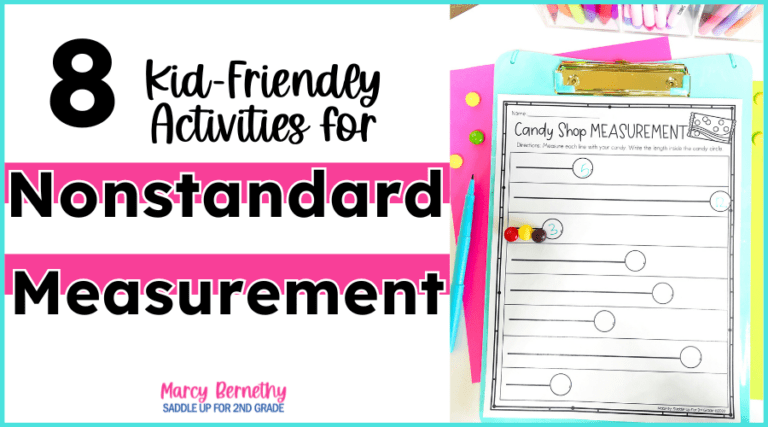

Join me for a FREE, Guided Math workshop to discover how to easily incorporate Guided Math into your current schedule!
The concept of fractions and equal and unequal parts is a key skill that students learn and build upon from 1st grade on up. The best way to help students master this concept is by introducing it and practicing with engaging, hands-on activities, visual representations, and real-world examples. If you are a primary teacher looking for effective ways to teach the concept of equal and unequal parts to your students, read on to learn about these teacher-tested strategies to help make your fractions unit a success!
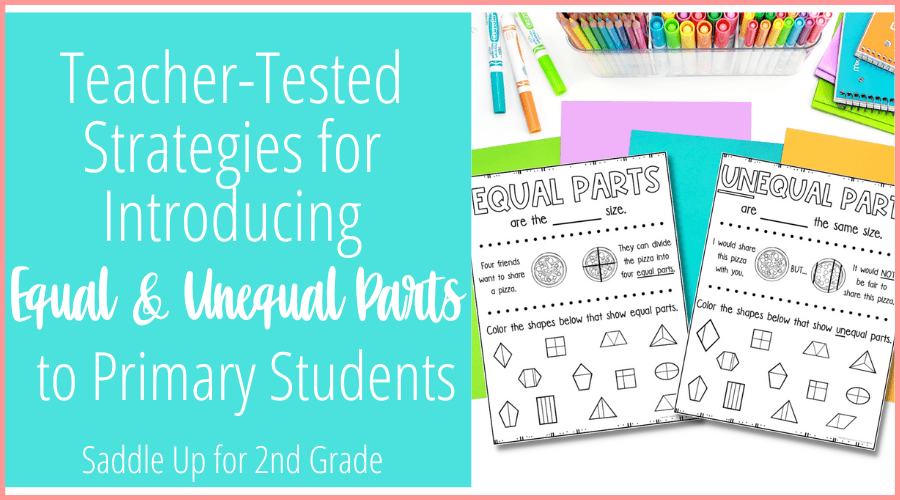
Just when your students start getting the hang of mathematical concepts such as addition, subtraction, and understanding numbers, it’s time to throw a whole new challenge at them… FRACTIONS!
While this may seem a little overwhelming, especially in the primary grades of 1st and 2nd grade, with the right strategies, activities, and a positive attitude, you can make introducing and teaching fractions a great success.
Understanding equal and unequal parts is essential in creating a strong foundation for students to build their fraction skills on.
Introducing equal and unequal parts using concrete objects and visual representations will help students see how this concept applies to the real world so they can master more abstract ideas around fractions in the future.
In this blog post, I’m sharing teacher-tested strategies for introducing and practicing the skill of equal and unequal parts in 1st and 2nd grade. Let’s dive in!
Equal fractions are fractions that show the same value and the same parts of the whole. Equal fractions may have different numerators and denominators, but they still represent the same value.
For example, ½, 2/4, and 3/6 all have different numerators and denominators, but they still represent the same parts of a whole, AKA, a fraction.
A fraction represents one whole shape or object. When you divide the whole into parts, you can either divide them in parts of the same size or different sizes.
If a whole is divided into parts of the same size, the parts are equal. If the whole is divided into parts that are not the same size, they are considered unequal.
For example, if you divide a square down the middle, you have 2 equal parts of the same size. Each part represents 1 part of the whole, which is 2 parts. Therefore, this fraction is ½.
However, if you divide a square with one line down the middle and one line diagonally, you will have unequal parts.
In order to tell if two fractions are equal, you must look at the shapes as a whole to determine if the same parts of the whole are represented.
While the two shapes may not have the same number of equal parts, they can still be considered equal fractions, such as in the example of ½, 2/4, and 3/6.
As students begin exploring the concept of fractions in 1st grade, they must first be introduced to equal and unequal parts. It’s essential that we give students opportunities to work with these equal and unequal fractional parts in concrete, hands-on ways as well as support them with visual representations.
When introducing equal and unequal parts in 1st grade, begin by creating a whole group fractions book together. Each day, students will add to the book. On the first day of your fractions unit, complete the equal and unequal parts pages, as this is the most foundational fractions concept that students need to understand.
This fractions book helps students not only visualize equal and unequal parts of a fraction, but also allows them to apply it to real-world pictures and objects.

Using concrete activities that allow students to physically manipulate equal and unequal parts is key to helping them apply their knowledge and determine what are equal fraction parts and unequal fraction parts.
There are so many manipulatives and kid-friendly materials you can use to help students explore fractional parts.
What kid wouldn’t love to explore with play dough during math class? Play dough is a great manipulative to use to model equal and unequal parts. Plus, they’ll love using their play dough tools to partition shapes.
To use play dough fractions in your math lessons, give each student a handful of play dough. You can have two students share one can and a plastic cutting tool. (Bonus points for having the two students partition their play dough into 2 equal parts!).
They will draw a partitioning shapes instruction card, which will tell them how many shapes to make and how many equal parts to divide them into. They can use the lid of the play dough container to make circles.
As they explore partitioning different shapes, discuss how many “slices” it takes to equal one whole. Help students compare different shapes to determine what are equal fractions and what are not.
Use guiding questions to encourage students to share what they notice about the size of the slices and model how to tell if fractions are equal.
As they explore, they will draw the shape and equal parts on their recording sheet, which helps them create visual representations to make this concept stick!
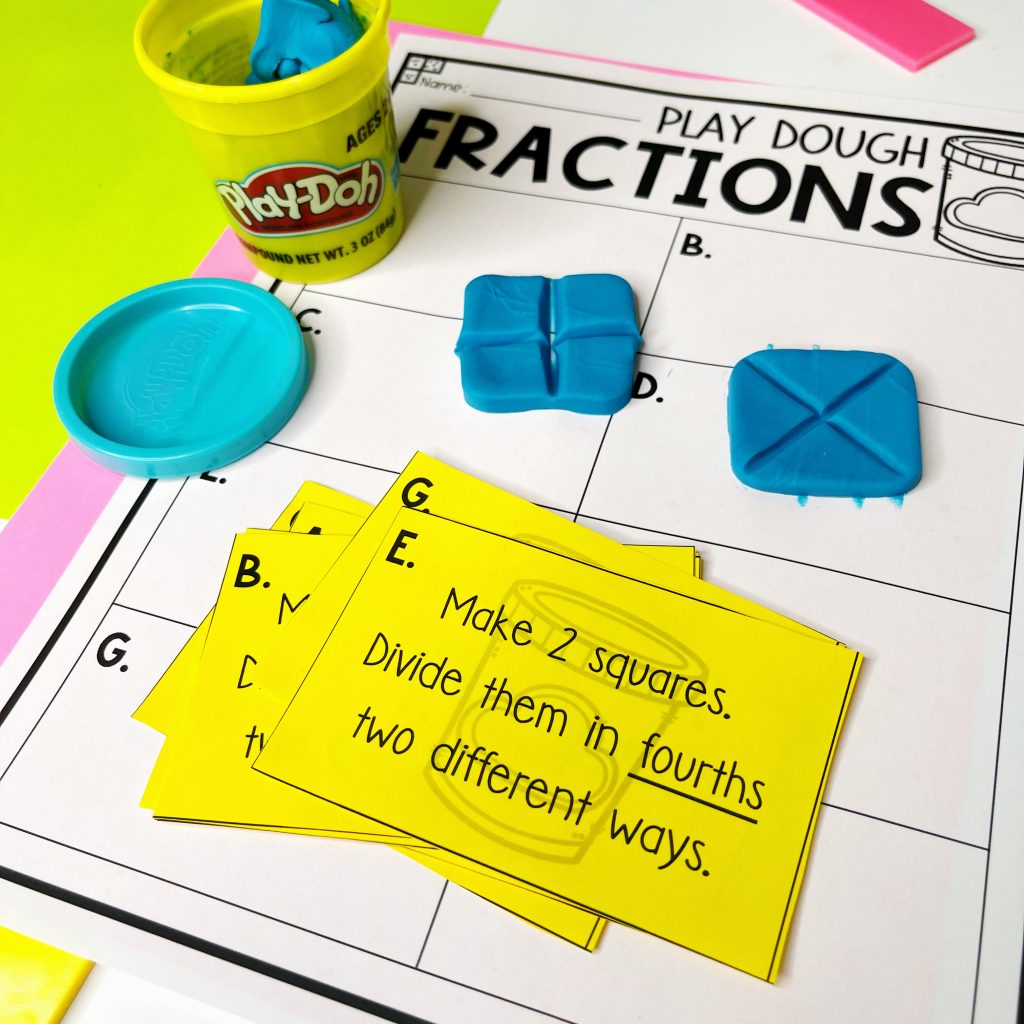
Another simple, hands-on activity to help students explore equal and unequal parts is paper shapes. All you need for this activity is construction paper and various paper shape cut-outs.
Each student will have a stack of different plain shapes, such as squares, rectangles, and circles. I have a template included in my 1st Grade Fractions Unit and 2nd Grade Fractions Unit, or you can make your own. Each student will also need 2 pieces of construction paper.
They will label each page at the top with “halves” and “fourths.” In 2nd grade, have students label a third page with “eighths.”
Model to show students how to fold their shape cut-outs to make equal parts. Show them how to fold a square in half to make 2 equal parts and how to fold it in half again to make 4 equal parts.
Have students cut the shape on the folded lines and glue it onto their page to represent either halves or fourths.
Students will repeat this process, exploring equal fractional parts with various shapes.
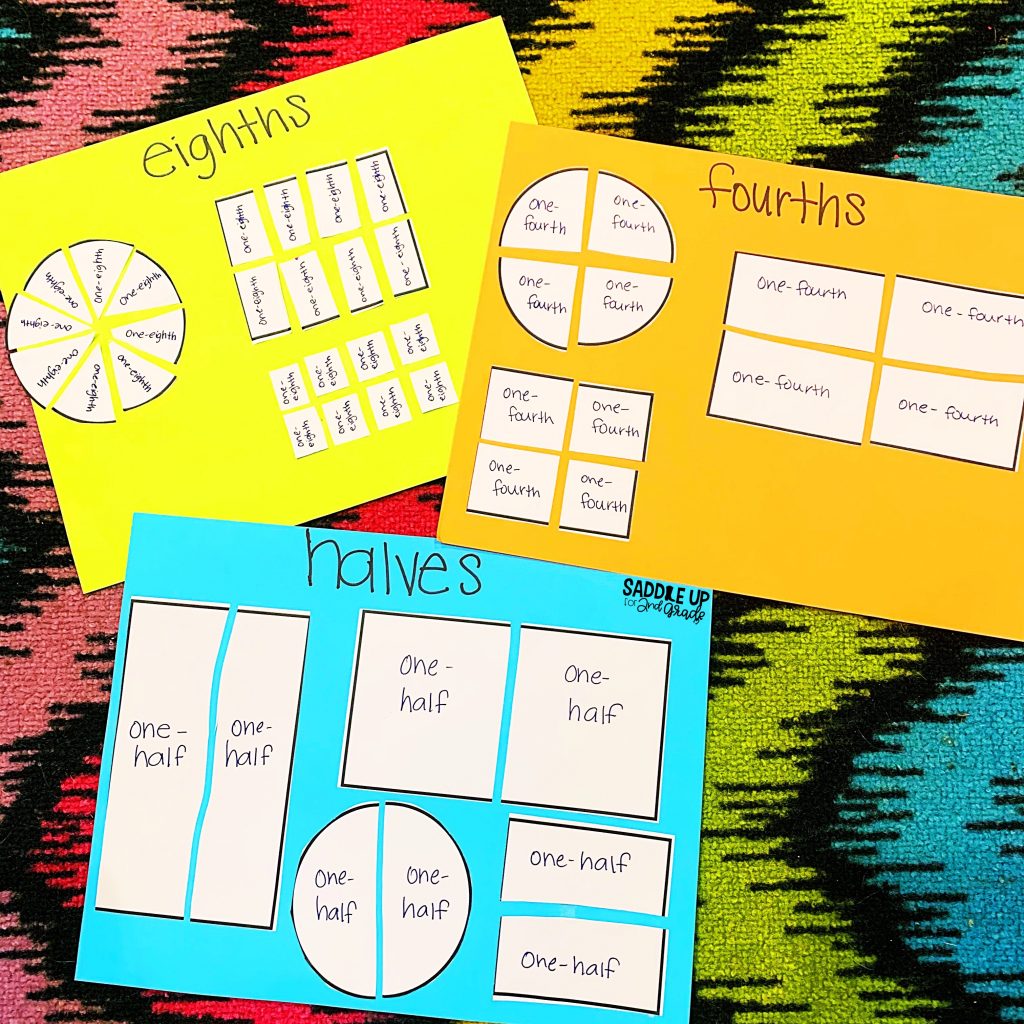
Your small group lessons at the teacher table are where you can really dig into equal and unequal parts with your students. By using an equal and unequal parts sorting activity, you can tailor your instruction and mathematical conversations to the level of your students.
First, print the equal and unequal parts cards on sticky notes and create a t-chart labeled with a side for equal parts and a side for unequal parts. Each student will take a sticky note and sort it onto the t-chart.
As they choose the correct side, have them use mathematical vocabulary to explain their reasoning and why the shape shows equal or unequal parts. They can draw a matching shape with matching parts on a recording sheet or whiteboard.
With students who still need more support with this concept, use this time to help guide them through determining what shapes have equal and unequal parts.
For students who are ready for more of a challenge, you can discuss equal fractions and how some shapes may have a different number of equal parts, but still represent the same parts of a whole.
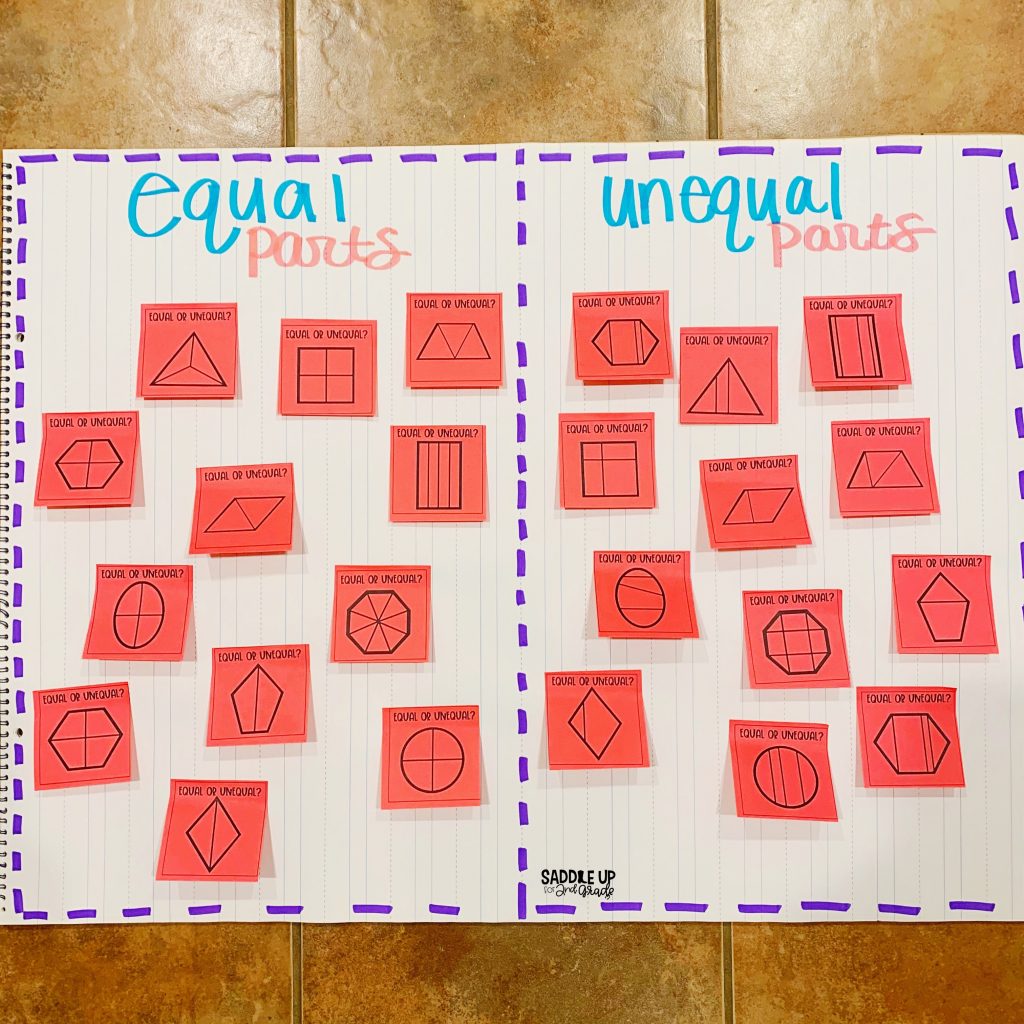
Once your students have a strong understanding of equal and unequal parts, it’s time to put that knowledge to the test! Spin and Cover Fractions is an engaging independent practice activity to help students identify equal parts such as halves and fourths as well as unequal fractional parts.
Students will spin a plastic spinner (or a paperclip and pencil) to determine if they will color a fraction with 2 equal parts (halves), 4 equal parts (fourths), or unequal parts.
This is a great way for students to show what they know and work independently.

Another hands-on way to practice equal and unequal fractions is by playing a game of Musical Fractions as a class.
To play, place the musical fraction cards in a circle around the room. Each student will stand next to a card. Play your favorite GoNoodle song or music while students walk around the cards in a circle, just like musical chairs.
When the music stops, they must race to the fraction card closest to them and call out either halves, fourths, or unequal.
The teacher then calls out either halves, fourths, or unequal. For example, if you call out fourths, every student standing next to a fourths fraction card is out and must sit down. Play continues until one student is left standing.

As students explore equal and unequal parts and understand how to tell if fractions are equal, it is effective to have them complete various interactive notebook activities to keep in their math journal for practice and future reference.
They can always go back to these activities, such as this Pocketful of Fractions activity, during independent practice if they need help freshening their memory on equal and unequal parts and various parts of a whole.
For this activity, students will sort various shape cards according to their parts, whether they have equal halves, equal fourths, or unequal parts.
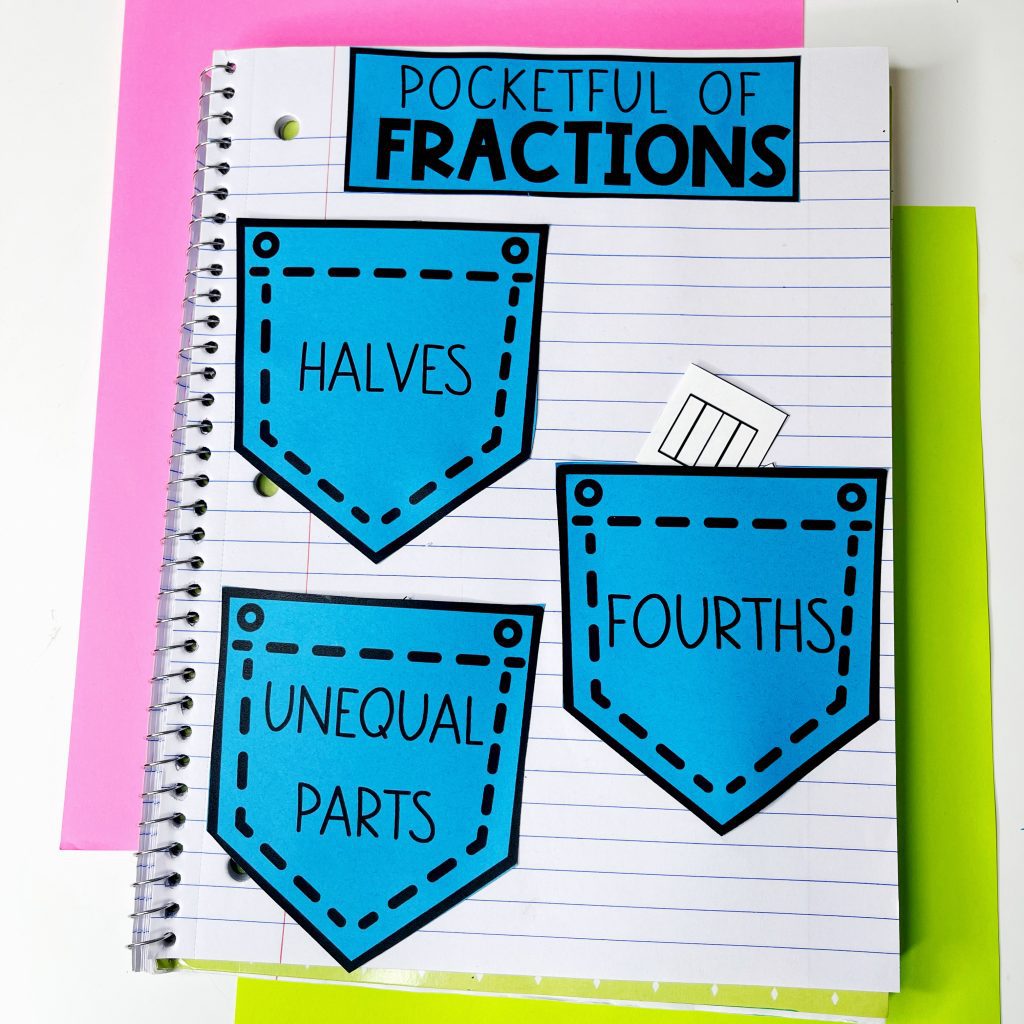
If you are a 1st or 2nd grade teacher looking for engaging and effective lessons to teach equal and unequal parts in your classroom, you can shop my guided math units in my website store below or in my TPT store.
Looking for more hands-on activities for practicing fractions? Check out this blog post with more ideas!
Pin the image below to come back to this post later!

Math should be fun, not stressful. Ditch the timed math fact tests and replace them with math games that will help your students learn and retain information more effectively.
© Saddle Up for 2nd Grade • Website by KristenDoyle.co


